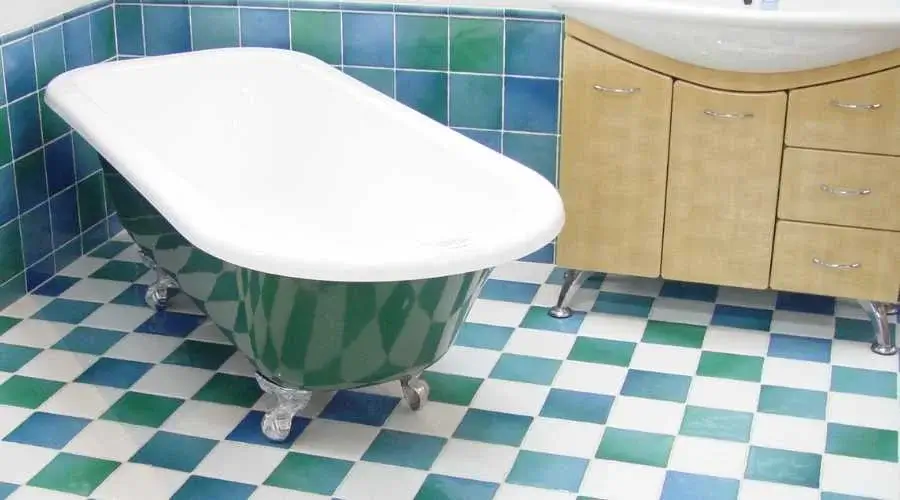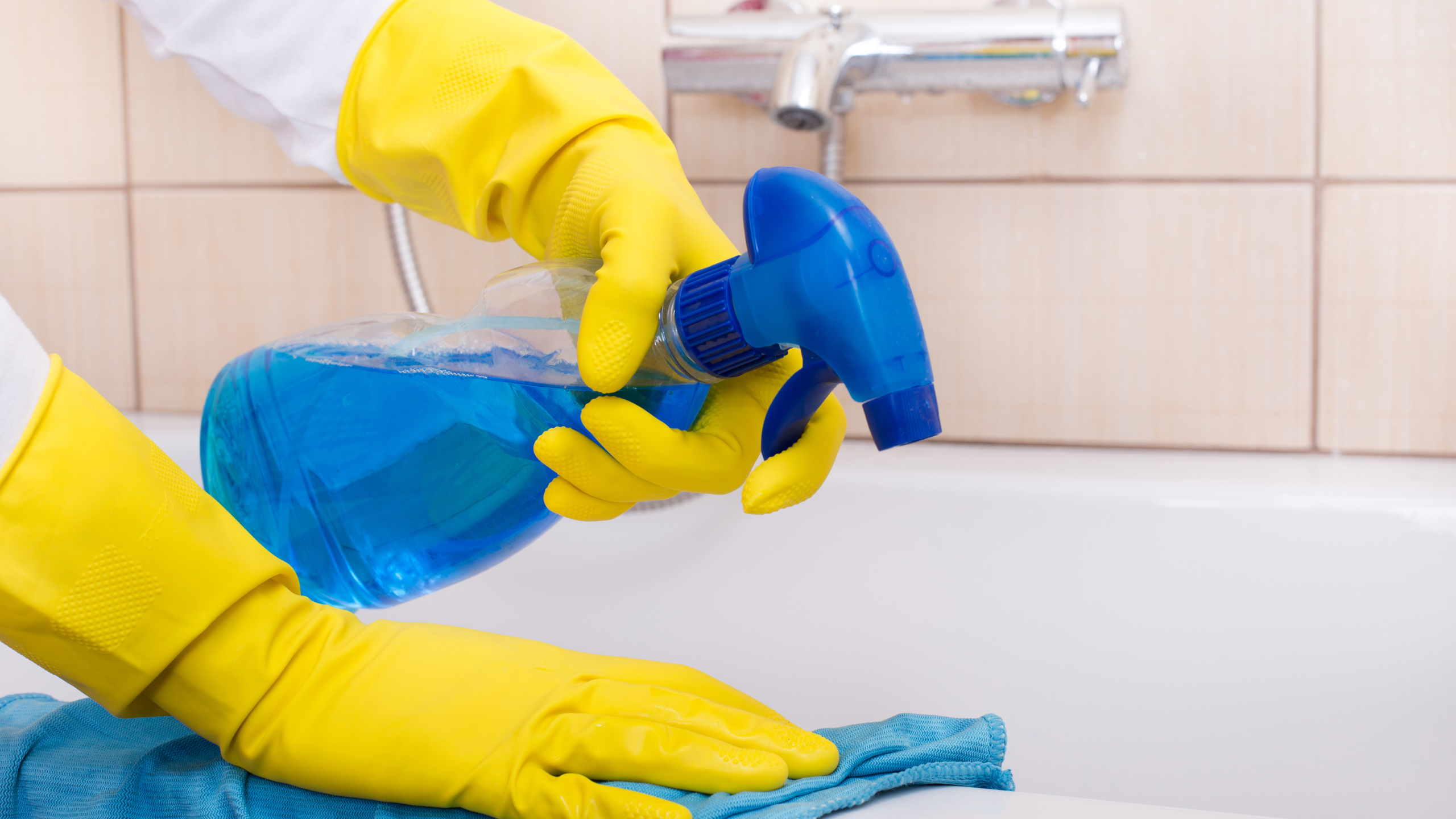If you have hard water running at your home, then limescale build-up on your faucets, showerhead, and toilet is something you should be worried about. Hard water leaves a chalky, off-white substance that is not only unsightly but can also clog up your water appliances over time if it is not removed regularly.
The problem, however, is that it’s tough to remove limescale, especially if it has been building up over a long period of time. Fortunately, it is still possible to remove it and restore your toilet to its pristine condition within a few hour’s time. In this article, we will teach you how to do that.
But First, What Is Limescale?
Limescale is a thin layer with a crusty, chalky appearance that develops on surfaces that come in contact with hard water. Over time, it becomes a discoloration, then begins to build into a chalky, flaky crust that eventually becomes hard and craggy to the touch.
This build up is caused by a deposit of calcium carbonate that the water leaves behind as it evaporates. And because it is naturally occurring, it is often harmless. However, it becomes a problem when it builds up over time and clogs up water pipes and appliances.
Is Limescale Build-up Harmful for My Toilet?
On its own, a thin film of limescale will not harm anything besides the appearance of your toilet. It can discolor your toilet and leave behind some flaky areas around the seat and rim where the water may have splashed, thereby making it appear unhygienic and disgusting to use.
However, as it builds up and gets thicker over time, it will be inevitably harder to remove and may end up clogging waterways. Moreover, it can be a nuisance to have to continuously clean it off regularly.
How to Remove Limescale Discoloration
Toilet discoloration due to thin limescale build up is fairly easy to remove with plain white vinegar. However, this is best done on a day when you would not be using the toilet for a while because it will have to sit untouched for a while for this method to work.
Instructions:
- Prepare all neede materials. For this, you will need three (3) liters of vinegar and a trusty brush.
- Turn off the water supply to the toilet and flush to remove as much water as you can from the cistern and the bowl. As much as possible, make sure it is dry.
- Pour 1 liter of white vinegar into the cistern tank. Make sure that the mechanisms and flush apparatus will be covered with it.
- Pour 1 liter of white vinegar into the toilet bowl. Splash it around the sides of the bowl too.
- Let the vinegar sit in the toilet for about 3 to 4 hours.
- Then, turn on the water supply of the toilet.
- Flush the toilet to rinse the vinegar and the dissolved limescale out of the cistern and bowl.
- Inspect the toilet for any stubborn stains. If you found some, splash more vinegar on that site.
- Using a brush, scrub the area with stubborn stains splashed with vinegar firmly to dislodge them.
- Let the vinegar sit for another hour, then flush the toilet again to rinse.

Check this helpful article about Everything You Need to Know on How to Unclog Bathtub or Shower Drains
How to Remove Thick Limescale Build-Up
If your toilet has issues such as poor filling, poor flushing, or slow emptying, then the problem might be due to thick build-up of limescale. Bear in mind that this will be more challenging to get rid of, and that the toilet will have to sit untouched for an extended period of time because you need to leave the toilet soaked in chemicals for it to work its magic.
Instructions:
- Prepare all needed materials and equipment. For this clean-up, you will need the following:
- Rubber or latex gloves
- Protective eyewear
- Face mask
- 2 liters of white vinegar
- Pumice stone
- Muriatic acid
- Turn off the water supply of the toilet and flush to remove as much water as possible from the cistern and bowl. Pat it dry with some cloth.
- Pour 1 liter of white vinegar into the cistern and another liter into the bowl. Make sure that all the affected areas will be covered as much as possible.
- Let the vinegar sit for 3 to 4 hours to soften the deposits thoroughly.
- Turn on the water supply to the toilet and fill up the cistern.
- Wet the pumice stone and use it to scrub the heavy deposits on the toilet. Focus scrubbing under the rim, around the flush actuator, as well as any other moving parts or connections.
- Flush the toilet to rinse out the vinegar and limescale residue.
- Put on some protective gear (mask, gloves, and protective eyewear) as the next step may sting your eyes, nose, and skin.
- Splash some muriatic acid into the cistern and bowl until all surfaces are covered.
- Allow the muriatic acid to sit for 10 to 15 minutes, then flush and wipe out the bowl to remove any remaining build up.
How Can You Prevent Limescale from Building Up Again?
After exerting time, money, and lots of hard work in scrubbing away limescale gunks, you would want to make sure that the same thing will not happen again in the future. To do this, the most optimal solution is to avoid using hard water in the first place.
Instead, use a water softener system that adds salt or potassium to your water. This counteracts the calcium carbonate and helps prevent limescale build up in your pipes and water appliances. However, water softening treatments are quite expensive.
Not to mention, the tanks can take up a lot of space. The system also needs lots of maintenance to keep it running well over time, such as constantly adding salt or potassium to the tanks.
But if water softening is not feasible, you can still combat limescale build up by pouring 1 cup of lemon juice or white vinegar into the cistern. Then, flush the toilet to allow the acidic water to make its way through the system.
Doing so will prevent limescale build-up. Repeat this regimen once a month to keep the limescale build-up at bay.




